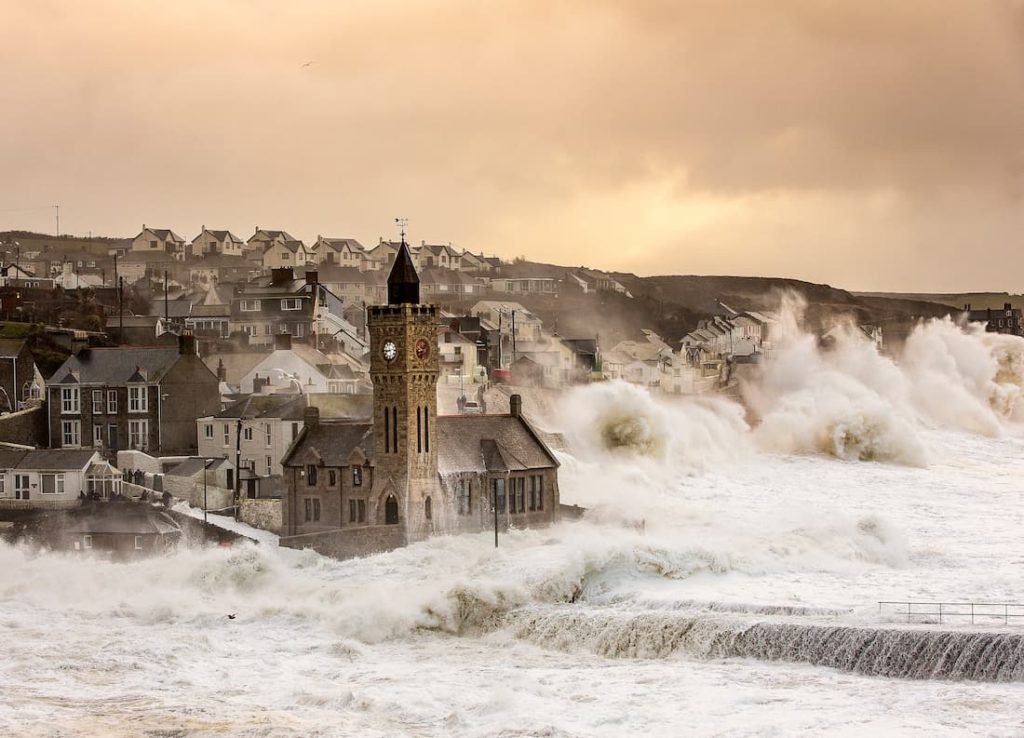
© 2020 Nomadict. All rights reserved.
Hiking to the top of Machu Picchu and watching the sunrise illuminate the ancient ruins of the Inca…this moment is one of the first clear memories I have of experiencing true awe. Peru was also the first time I had traveled to a destination with the intent of being adventurous for most of the trip. I spent four days hiking from Cusco to Machu Picchu through the Andean Mountains, going from 2000 meters to 5000 meters of elevation, back down to the 2500 meters of Machu Picchu. It was a lot of work, but definitely worth it.
Standing at the top of Machu Picchu was one of the most epic moments of my life, and I didn’t have a camera to capture the moment, aside from my iPhone 5s.
One of those places was Africa. I visited 10 countries in Africa over the span of three months after finishing my work placement. In a way, this trip was the culmination of all my previous travels into one amazing photographic and life changing trip. Having the ability to travel for three months provided me with the opportunity to explore and develop my passions of landscape, wildlife, and astrophotography. The photos I took on this trip also inspired me to take the time to learn how to edit. I had taken many photos on different trips before, but it wasn’t until I visited Africa that I felt inspired to learn how to take my photography to the next level.
I had already spent two months taking photos in Africa, most of which involved trial and error since I did not have much access to the Internet. Before leaving the mainland to head to Madagascar, I had a few hours at the airport in Kenya, so I took advantage of that time by learning as much as I could. I spent this time watching YouTube videos and reading articles on issues I had encountered in the field over the past few months, especially for astro and wildlife photography.
I also learned how to focus on animals through tree branches (a skill I would have greatly appreciated when I was gorilla-trekking in Uganda). Besides wildlife photography, I finally understood what was needed to properly focus on and expose the Milky Way. Taking a break from searching for lemurs, I went on a three-day camping trip to climb the highest climbable mountain in Madagascar. It was literally the darkest place I had ever been in my life. During my research, I had come across the process of image stacking, so I took timelapses of the Milky Way because I knew I could use multiple photos to remove noise from low-light shots during post-processing. I also experimented with astro panoramas to try and get more detail in my shots. This was another moment I experienced true awe and has forever changed how I view astrophotography.
Technical understanding
With a background in mechanical and materials engineering, my training has inherently helped me understand the technical side of photography and composition. The environment of photography is constantly changing. Capturing the moment properly is really just solving a series of problems. Focus, composition, shutter speed, aperture, iso…there’s a lot to consider as you take each shot. Low light shots, such as astrophotography, are even more complicated because noise becomes a large issue if not accounted for. Having a technical background helps me understand how to change things on the fly to properly capture even the most fleeting of moments. For example, if I see a storm coming across the horizon, I might only have a few minutes to set up my camera to take a timelapse.
Basically, understanding the physics behind taking a photo has led me to an understanding on how to take higher quality images. In that sense, Alyn Wallace taught me a lot about astrophotography through his videos and articles. I think what inspires me most about his work is his level of comprehension of astrophotography. It goes way beyond merely knowing his camera and up to understanding the actual natural phenomena of astrophysics. His method of explaining complex concepts based on fundamental physics is inspiring. I do something similar in my job, but would love to incorporate this more in my photography as well.
For example, I use software to reduce the noise in my astro shots through image stacking. Noise in a photo is random, so using several almost identical photos can allow software to remove the noise without sacrificing detail. Understanding how noise works and can be removed from a photo helps me to improve my astrophotography.
Astrophotography and technique
I find astrophotography to be more rewarding than daytime shooting, partially as a result of the planning that goes into the shot, but also because of the amount of luck involved. As other astrophotographers will tell you, the sky is often very cloudy at night (the desert being an exception). When you manage to have perfect conditions and get a clear shot of the Milky Way, there is a whole other level of satisfaction from experiencing and capturing the moment. It almost feels as though I am experiencing the exposure of the sensor, as if I were exposing film. In that moment, there is nothing else to do aside from look up at the stars, which is a very humbling experience. Through photography, I have gained a greater appreciation of the little moments in life.
With a long exposure of the night sky, the camera is able to pick up a lot more detail than the human eye. The “exposure” of the human eye is about 1/15th of a second. When I’m taking astro shots, I’m shooting around 15s, which is 225 times longer than my eye can be exposed for. This extra-long exposure reveals so much of the night sky. Seeing the Milky Way in the savannah of Africa with your eyes is already spectacular, the ability to capture even more detail with your camera is literally mind blowing.
It’s often more difficult to plan an astro shoot than a daytime shoot. The Milky Way moves along a specific path in the night sky, so planning your nighttime composition during the daytime means you must know where and when the Milky Way is going to appear, especially if you want to take a timelapse that spans hours of movement. The problem with this planning is that a lot of places are closed in the evenings or are dangerous to be out at night. For example, when I was shooting in Africa there were many interesting trees or other objects that I would like to include in my Milky Way shots, however, I couldn’t wander around the camps in the evenings because of lions and other predators. This means that you are kind of stuck with shooting near the location you’re staying, which may limit your view of the Milky Way and your ideal composition.
The duration of an astro timelapse makes planning a lot more difficult as well. With a typical timelapse, I might shoot at an interval every 4-6s, but with an astro timelapse, I’m shooting three times longer. The length of a timelapse is based on the number of photos you take, which means that it will take three times longer than a timelapse shot in the day to make a 30-second video. So, I must also plan where I can leave my camera out at night for an extended period to take the shots I want, without worrying about theft or damage. There is the added benefit that, with astrophotography, I’m able to leave my camera in place for longer since I have already “finished” traveling for the day. It can be difficult to take daytime timelapses because of how long you need to stay in the same location; if you’re on a hike and need to be down by sunset, it’s harder to take a proper timelapse due to the shortage of time.
Timelapse
Whether taking timelapses during the day or at night, I think the most important aspect of timelapse photography is motion. Taking a timelapse of a stationary object does not provide much interest to the viewer. When planning for a timelapse, each camera setting depends on the subject of motion in the video, which changes almost every timelapse. For example, if you are taking a timelapse of clouds, the speed of the clouds dictates the interval between shots. If the clouds are moving very rapidly, I set the interval between 2-4 seconds, but if the clouds are moving very slowly, the interval might be 8 seconds or longer.
For example, the SAIL storm cloud video had an interval of 2 seconds between each photo. The result is a video that is about 7 seconds long, with the cloud passing by the CN Tower in the span of 1s. This means that the entire shooting time for that cloud to move across the skyline was only 48s—that’s a fast cloud. If I had shot with a 12-second interval and taken fewer photos, the cloud would have passed the tower in much less than 1s, which is not much time to show such an amazingly epic cloud. This is also an example of where understanding your camera and settings is extremely important. If I had taken another minute to figure out my settings, the cloud would have passed by and been nothing but a memory I could only describe in words.
For astrophotography, timelapse settings are based more on your shutter speed. The longer the shutter speed, the more details of the stars you can capture, at least until the rotation of the earth starts to create star trails. If I am shooting with a shutter speed of 13 seconds my timelapse interval is going to be much longer than a storm cloud, perhaps up to an interval of 15 seconds. This long interval means that, to get a 10-second video at 24 frames per second, I’d have to take 240 photos, which would take one hour (240 * 15s). Accordingly, the planning for a longer astro timelapse is a bit more strenuous, since you must plan to be in position for several hours, sometimes late into the night.
As for the conditions that make for an interesting timelapse, you need a lot of luck. A sky with interesting clouds, buildings with lights turning on or off, stars that are not covered by clouds, or a sunset that has enough clouds to be interesting but not too many clouds that the sun is blocked. For example, one of my favorite timelapses is the Milky Way timelapse shown in the Still Don’t Know My Name astro reel. This timelapse almost didn’t happen due to the poor conditions when I first went to shoot. Initially, there was a lot of smoke in the sky from nearby forest fires, which produced a lot of haze. There was also a lot of light pollution nearby. I had scoped out my ideal composition during daytime (shown in the video), however, when I went to set up my camera at night, there were lights illuminating a volleyball court nearby that completely ruined the night sky. I set up my camera behind a tree to avoid the light and took a timelapse of the Milky Way in a different location. This timelapse is shown in the “Stars of Canada” reel, where you can see the haze from the smoke moving across the sky.
When I went to pick up my camera an hour or so later, the smoke had cleared from the sky, likely due to a change in wind, so I decided to sit and watch the Milky Way for a few more minutes. I’m so glad I did, because on my way back to the cabin, I noticed that the volleyball lights had been turned off. I quickly set up my camera to take another timelapse, the one where the Milky Way moves across the lake, and it turned out to be one of my clearest astro timelapses ever. This night is a perfect example of how much the conditions can change in the span of an evening, and how being flexible with your astro shooting can really help to capture some unexpectedly great footage.
Visualizing and editing
The rest is visualizing what you want the video to be; this is something I’m working on improving all the time—editing video is one of my newest creative pursuits. I knew that I would be interested in editing video, since I have always been interested in taking timelapses, but the actual editing of the video, timing the speed of the video to the music, adding cinematic effect, etc., that’s a whole other level of technical knowledge and creative vision.
I aim to bring about a certain emotion, usually tied to the music, that I feel fits the moment as I watched the event captured by the timelapse with my own eyes. I hope to inspire people to look up and slow down to watch the sunset or movement of the clouds more often. I think that taking even a few minutes to look at the colour of the sunset or the movement of the clouds can help bring mindfulness to a person’s day, hopefully helping to improve the experience of the rest of their day. Even in a city, there is a lot of cloud motion and colour.
For astro reels, I try to evoke the same feeling of awe that I felt when taking the timelapse. Seeing the extra level of detail of the Milky Way captured by a camera is amazing, let alone trying to comprehend the motion of the earth causing the movement of the Milky Way through the night sky. I think it’s a very humbling experience.
For wildlife reels, I try to emphasize the emotion of the animals themselves, or the emotion I felt while looking at them. For example, I can feel happy from watching the playfulness of lemurs, but also sad at the reduction of their population in recent years. I can also relate to a moose getting lunch while on vacation.
Learning to edit video has been very helpful to achieve what I envision. If I know I want the timelapse to slow down or speed up, I can adjust the interval to do that in camera, rather than by editing, which helps to make the video look a lot more natural.
When I process a timelapse made up of photos taken on my Sony a7iii, the end video is in 6K resolution. I can take this 6K timelapse and zoom in 6 times while maintaining HD resolution, which means that I can add an incredible amount of cinematic effect for videos that are shown on an HD device, like a phone. I try to plan what kind of motion I want to add cinematically to the end video. Usually this means I shoot at a wide angle to give me the cinematic options later, but sometimes I change lenses to zoom in closer for extra detail on the clouds, sun, moon, or anything else if I know that I want to zoom in at a certain part in the final video.
When evaluating my own work, the main question I ask myself is: “When looking at this photo, do I experience a similar emotion to the emotion I had when taking the photo?” When I’m witnessing a moment and taking photos of it, I have a certain feeling that I associate with that experience. I also have a particular vision of what the photo could look like once edited. On my travels, I keep a journal of my experiences, which helps me to better remember how I felt in different situations.
Next, I ask myself: “Have I done enough editing that the person viewing this photo will also experience that same emotion when they see the photo?” If so, then the style of the photo is ready. Though, of course I also want to make sure that the quality is to my standard. This involves checking the sharpness, lighting, and composition.
The more photos you edit and show people, the more you learn about your own editing style, and the better you become. It’s important to not get hung up on one aspect of one photo.
I have taken thousands of photos in my life, so the ones that I choose to edit are the ones I find the most impactful and interesting, and I want to make sure that I have properly conveyed the photo’s importance to me. When editing a photo, I try to bring people into the moment with me so that they can more closely share my experience. The camera merely captures the data, the photographer shapes the memory through editing. I think part of conveying the photo’s importance comes from writing the captions for my photos. I know a picture is worth a thousand words, but sometimes writing a few of your own can help direct people to a deeper level of appreciation for the photo.
Processing video is a slightly different task because I find that music plays a large role in the emotion of the video. I often experience awe when watching sunsets and storms, but the emotion that I convey by video will depend largely on the music. For example, the storm as shown in the SAIL storm video evoked a form of awe that was almost fearful. My heart was racing as I watched the cloud roll across the sky, especially knowing that this cloud was the result of storms that had caused tornadoes near Toronto. Accordingly, I chose a song that conveyed the epicness of the oncoming storm. Also, the cloud kind of looks like a wave, so a song named SAIL seemed extra fitting.
Impactful travel and photo moments
Besides the storm, there are many moments that have been impressive, impactful, and surprising. One other moment that stands out is visiting Etosha National Park in Namibia. It’s hard to put this experience into words.
Having driven for hours through the desert, I had finally arrived at Etosha National Park. I was exhausted and ready to eat and relax. After dinner, I walked over to the watering hole in the hopes of finding some elephants or giraffes drinking. Much to my disappointment, there were no animals nearby! I could see a few giraffes off in the distance so I waited, hoping that they would come for a drink, but to no avail. All of a sudden, there was a commotion from some people nearby. I turned away from the giraffes to find this solitary rhino slowly lumbering down to the watering hole. He gave us a brief head nod as if to say hello, and then went about drinking. He seemed to be fairly shy—as soon as some elephants came over to the watering hole he quickly departed. He kept looking back forlornly as he walked away, perhaps knowing that he would have to wait until tomorrow for another drink.
This was perhaps one of the most peaceful moments in my life. The mirror-like watering hole, the setting sun, and being lucky enough to share it with one of the most endangered animals in the world as he took his time to have a drink in the desert. There are only around 5000 black rhinos in the wild; I never expected to see one, so the moment was incredible for many reasons.
As you can probably tell, I am fascinated by reflection shots, currently using the Matterhorn photo as the cover photo for my website, social media profiles, and my first @_wanderloots Instagram post. I have been in search of reflection shots ever since that moment in the Swiss Alps. They are often difficult to get, since you need to have near perfect weather conditions (no wind and the right amount of sunlight). Experiencing the rhino, reflected in the waterhole in Etosha, was extraordinary.
Ultimately, I want to be able to make people feel the way I felt in the moment capturing the shot or what I envisioned while watching the event, and to bring awareness to issues such as animal endangerment, climate change, and dark sky preservation. Africa in general really helped me begin to appreciate the impact of human encroachment on the wild. The magnitude of what it meant to have a 95% reduction in lemur population in the last 20 years really hit me while hiking in Madagascar’s jungle and seeing how few lemurs there were. This reduction in population is largely due to deforestation, shown very clearly by this BBC timelapse video of Madagascar.
I realized that photography could help share my experiences of less-traveled places and bring awareness to conservation issues that are not regularly discussed in social media. I try to include details of these experiences in my Instagram captions, though I would like to do more to help conservation efforts in the future.
Taking a step back from my everyday life for three months in Africa helped put everything into perspective and has continued to help me to appreciate my life generally. I love traveling mostly because it constantly challenges my world view. Every experience has a new aspect to it, causing me to re-evaluate my own life and see how it compares to others around the world.
For example, when I was hiking in the Andes in Peru, the water was not safe to drink, so you had to buy a lot of water while hiking. It was essential to track how much water I had remaining over the course of the day and to plan when I could get more. Similarly, when in Namibia, the next place to get water might not be for 100 km, so you must make sure you have a sufficient supply in case your vehicle breaks down in the desert. Aside from the difficulty of finding clean water, I’ve also gotten very sick from drinking water that should have been safe. When I’m home in Canada, I never worry about where I can get clean water. I now appreciate having access to clean drinking water and any other comfort and luxury, since I’ve been in so many situations where I didn’t have it. I try not to take anything for granted.
Would you like content like this sent to your inbox?
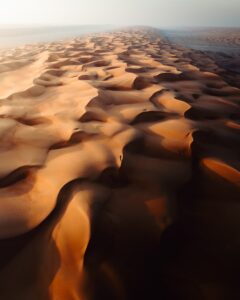
In this article featuring Witold Ziomek, we explore five essential principles for crafting powerful sunset dune photography through editing. Through a practical example, Witold shares his process of editing his award-winning photograph, alongside valuable insights he has gained as a dedicated traveler and photographer.

This article chronicles Mitchell Leong’s journey, who found solace and purpose through his lens. From the rugged expanses of the Canadian Rockies to the ethereal allure of starlit nights, each photograph tells a story of resilience, exploration, and the profound impact of the natural world. Through his lens, he seeks to bridge the gap between science and art, using photography as a tool for conservation and storytelling. Along the way, he shares invaluable lessons learned, from embracing fear to trusting in the power of storytelling.
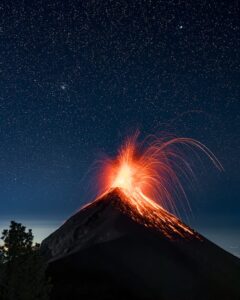
This article follows Phil’s path as a photographer, sparked by his unwavering love for exploration and ignited during post-university travels. Through his lens, we traverse Phil’s transformative journey across captivating landscapes, from the rugged beauty of the Canadian Rockies to the fiery spectacle of Volcán de Fuego in Central America, where he captured the winning shot.
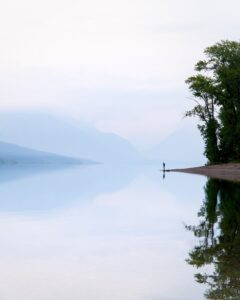
In this article, we delve into the journey of photographer Amirali, whose passion for photography was ignited amidst the challenges of academic life and the chaos of the pandemic. Through his lens, we witness Amirali’s transformative exploration of landscapes, from the serene landscapes of Finland to the mystic scenes of Montana’s nature, where he took a shot that won the Best of the Week.
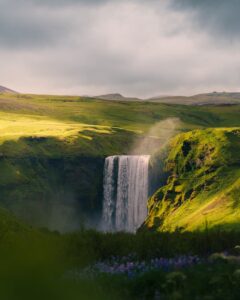
Inspired by a newfound love, Michael transforms the blank pages of his life into a vibrant canvas of nature and exploration. In this article, you can read about the profound lessons learned—from prioritizing living over routine to the art of editing and the magic of impromptu adventures—and witness the evolution of a photographer’s passion amid the breathtaking landscapes of Denmark and Europe.
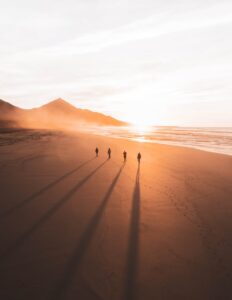
In 2017, Mathieu Morel’s first trip to Iceland marked a turning point in his photography journey. His photograph taken at Cofete Beach in Fuerteventura reflects the lessons he’s learned along the way. Thanks to the support of our community’s votes, he emerged as the winner of our weekly contest.
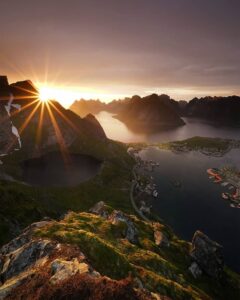
Barbara Thoeny won our weekly contest thanks to a golden hour photo in the beautiful Lofoten Islands. This article teaches us about her winning shot, passion for capturing the northern lights, and most valuable experiences as a solo traveller and photographer.
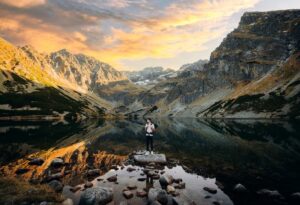
Meet Konstantin, a passionate traveler and photographer inspired by those who use their cameras to capture the world’s beauty and meaning. He aims to make each photo as unforgettable as the moment itself, emphasizing the importance of a positive attitude and cherishing the present moment.
© 2020 Nomadict. All rights reserved.
